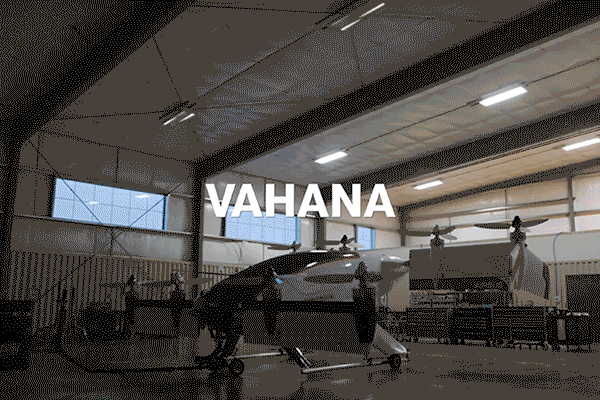
Supporting Airbus A3’s Vahana Autonomous eVTOL
Motivo delivered propulsion, power, and test systems for Airbus’ full-scale autonomous eVTOL, flown over 500 miles in 138 test flights.
Background
In 2016, Airbus’ Silicon Valley innovation center, Acubed (A³), launched Project Vahana: an ambitious effort to design, build, and fly a fully autonomous electric Vertical Takeoff and Landing (eVTOL) aircraft. The goal was to build and fly a full-size, self-flying aircraft and gather data to evaluate the technical and economic viability of this new mode of transport.
Most aerospace projects take a decade. A³ wanted flight tested results in under four years.
To move faster than traditional aerospace development cycles, A³ brought in Motivo to help build key subsystems and support testing. The team needed to develop a full-scale aircraft, integrate cutting-edge flight systems, and complete a robust flight test program in a fraction of the time typical in aerospace.
Motivo helped solve some of the program’s most demanding engineering problems including designing critical flight hardware that had to be safe, lightweight, manufacturable at speed, and reliable under intense scrutiny.
Project Scope and Phases
Motivo’s engineering contributions covered a wide range of aircraft systems, each with its own development cycle:
Architecture Studies
Early concept work prioritized low maintenance costs over traditional aerospace complexity, steering the team away from electro-hydraulics in favor of innovative electromechanical systems.
Rapid Prototyping
Teams designed, built, and refined hardware on tight iterative design and build cycles to support subsystem development and aircraft integration.
Subsystem Validation
Designs were validated through rigorous testing, including standalone subsystem checks and full-vehicle integration.
Iron Bird Testing
All aircraft systems were integrated and tested on a full scale iron-bird bench test. This testing was critical on an electric aircraft with a completely novel, high voltage DC propulsion system, a new avionics architecture and numerous beta-level custom components.
Flight Campaign
A 138-flight test program validated the platform, with nearly 500 miles flown and 13 hours of autonomous air time.
Technologies and Systems
Motivo was responsible for designing, manufacturing, and assembling three complete sets of variable pitch fans that were core to the propulsion system of the aircraft.
We also provided hardware and support for:
-
Battery swapping system
-
High-voltage power distribution
-
Actuated canopy system
Each set had to meet tight tolerances for strength, mass, and responsiveness, while being designed and built in weeks.

Variable Pitch Fan Hub Assembly

Variable Pitch Fan Subassemblies Ready for Delivery

Variable Pitch Fan With Composite Propeller

Variable Pitch Fan on Aircraft

Variable Pitch Fan Actuator Assembly

Complete Vahana Propulsion Unit
Outcome
By November 2019, Vahana had achieved every major program goal:
-
A³ successfully built and flew an autonomous full-scale eVTOL.
-
Motivo’s subsystems performed across a full flight test campaign.
-
Essential performance and economic data was gathered to validate future business models for air mobility.
Vahana is now retired after completing the full flight test campaign, but the aircraft proved out critical systems and informed Airbus’s next steps in urban air mobility. The aircraft can be viewed at the Hiller Aviation Museum in San Carlos, CA.
Capabilities Used
Systems Engineering: Complete System Architectures; Product Development Roadmaps; System Level and Component Trade Studies
Mechanical Design & Engineering: System Level Design; Kinematics Design for Mechanisms; Computer Aided Design (CAD) and Analysis
Electrical Design & Engineering: Power Electronics Development; Low / High Voltage Power Distribution Design
Prototyping, Fabrication & Assembly: Mechanical Assembly; Metal Fabrication; Rapid Prototyping
Testing & Validation: Subsystem Validation; Full-Vehicle Integration Testing